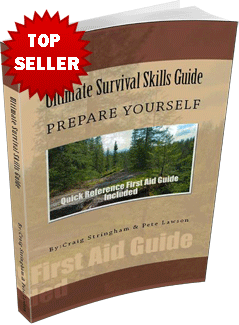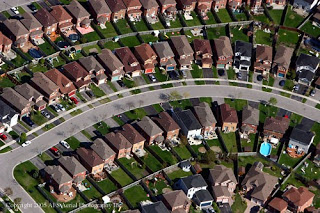Sustainable in the City: Bloom Where You Are Planted
by Daisy Luther
There really are very few “perfect” locations for a prepper. A very common excuse that some people give as to why they cannot prep is their current location. People say, “Well, once we are able to get moved to our farm in two years I’ll start prepping hardcore.” Another favorite is “I’m saving the money for moving instead of using it for preps.” Or even worse, ”Oh, there is no point in prepping here, because if the SHTF I’ll be dead.”
Stop this kind of thinking RIGHT NOW!!!!!!
Sometimes, to borrow an old saying, you just have to bloom where you’re planted.
There are many things you can do to increase your preparedness wherever you happen to live. Apartment dwellers at the top of a city high rise, folks in the middle of the desert, and people in HOA-ruled suburban lots all have to examine their situations, figure out their pros and cons, and work towards resolving what they can. With some pre-planning, there is a lot you can overcome if you have the right mindset. I suspect there are just as many (and probably far more) preppers living in the ‘burbs than there are living in perfect rural locations, with a lake, 10 acres of cultivated farmland in an off-grid house.
Widget not in any sidebars
Money is tight all over. It’s very easy for people to say, off-the-cuff, “Oh, you should move.”
But just picking up and moving isn’t that easy. It took me nearly 4 years to be able to do that. People have obligations and ties that some Joe-Blow on the Internet shouting out advice can’t even begin to understand. Some in the prepping community have a complete disconnect with the realities of everyday people. There are reasons like:
- Not enough money to leave
- A good job (very hard to come by these days)
- Family members in the area that you don’t want to abandon
- No work opportunities where you want to go
- Custody orders that require you to remain in a certain area
- A spouse who is not on board
- A house that won’t sell or with an upside-down mortgage
 The list goes on and on. There are as many reasons to remain in one place as there are people living in cities. And yes, I could sit here and refute each and every reason a person has chosen to remain, but it wouldn’t do one bit of good. People are sometimes alienated by the prepping movement when it seems that everything is black and white or like their personal decisions are somehow less valid than the decisions of some random person on the Internet.
The list goes on and on. There are as many reasons to remain in one place as there are people living in cities. And yes, I could sit here and refute each and every reason a person has chosen to remain, but it wouldn’t do one bit of good. People are sometimes alienated by the prepping movement when it seems that everything is black and white or like their personal decisions are somehow less valid than the decisions of some random person on the Internet.
That’s why it’s important to take your current situation, warts and all, and work with it. This doesn’t mean that you should abandon your plans for a better location some time in the future if such a move is warranted. But it means that you shouldn’t put off important preparedness steps until after that move is made.
Assess Your Situation
You don’t know where to go if you don’t know where you are. The first and most vital step is an honest assessment of your current situation. The situation that you have right now, this very minute, not the one you will have in a month or in a year.
Prepping is all about pre-planning and knowing what you need in order to thrive.
Assess your needs regarding the following in a SHTF scenario or disaster:
- Water
- Sanitation
- Food/Cooking
- Heating
- Security
- Light
Once you know exactly where you are with these things, you can begin to look for solutions that will work for you, today. Dig in and make a plan for the survival of your family.
And a little note to those who say, “It doesn’t matter, I’m in downtown Manhattan. I’ll die anyway.”
No, you won’t. You won’t be that lucky. You will be absolutely thoroughly miserable, breathing foul unhealthy air. You’ll be thirsty enough to drink unsanitary water, which will cause bowel issues to worsen problem #1. You’ll be hungry, but not hungry enough that you die of starvation. You will be at the mercy of thugs better armed than you. And you won’t die, not right away. You will live like I just described, and it will be horrible. Look at the residents of Manhattan during Hurricane Sandy. They didn’t die but they were absolutely miserable, they were terrified, they were eating from dumpsters, and much of it could have been avoided with some basic preparedness.
Survival in a Population Dense Area
Before I relocated to my little cabin in the woods I lived in a very metropolitan area. I was lucky in that I had 1/10th of an acre. I did everything I could come up with to make my little house as sustainable as possible should the poop hit the oscillating device before I could get out. A disaster in the city IS survivable.
 I planted every inch of the back yard and grew enough food that the home-canned and frozen produce lasted until Christmas. I stockpiled groceries. I had plywood cut and pre-drilled to cover each window of the house. I had printed official looking quarantine signs to hang on the door of my house as a deterrent. I put together a little outdoor fireplace in the backyard behind my fence. I got a big dog. I collected rainwater from downspouts at each corner of the house. I purchased an antique oil heater in good working order, and stockpiled heating oil. I had enough seeds to plant for the next 4 years. I located nearby sources of water, wood, and nuts. I got a wagon for hauling stuff if the transportation system was down.
I planted every inch of the back yard and grew enough food that the home-canned and frozen produce lasted until Christmas. I stockpiled groceries. I had plywood cut and pre-drilled to cover each window of the house. I had printed official looking quarantine signs to hang on the door of my house as a deterrent. I put together a little outdoor fireplace in the backyard behind my fence. I got a big dog. I collected rainwater from downspouts at each corner of the house. I purchased an antique oil heater in good working order, and stockpiled heating oil. I had enough seeds to plant for the next 4 years. I located nearby sources of water, wood, and nuts. I got a wagon for hauling stuff if the transportation system was down.
In short, I did everything possible to make the best of a potentially terrible location. It wasn’t perfect, but we would have outlasted most of the other people in our residential neighborhood and done so under the radar.
The Priorities
Let’s take a look at each of the major challenges that we face in a SHTF situation. Obviously different disasters offer different challenges. These lists aren’t meant to be comprehensive. They are meant to be a starting point to get your wheels turning on how you and your family can best survive, exactly where you’re planted right now.
Water
You can only survive for 3 days without water (and you’ll be weak and suffering way before that) so that should put water preparedness at the very top of your list. Some ideas: 1 month supply of drinking water stored (plan on a gallon per day, per person and pet), non-electric water filtration system (with spare filters), buckets along with a sled or wheel barrow depending on the season for transporting water, a water catchment system, water purification supplies (bleach, pool shock, tablets), system for catching gray water to be reused for flushing, washing, etc.
Sanitation
In the aftermath of Hurricane Sandy in New York, it was reported that people were defecating and urinating in the hallways of apartment buildings once the sewer system stopped working. Lack of sanitation is not only unpleasant, but it spreads disease. Some ideas: portapotty, buckets lined with heavy duty trash bags, kitty litter, water for flushing if you have septic, learn how to shut off the main valve so that city sewage cannot back up into your house or apartment, supplies to build an outhouse, lime, baby wipes,antibacterial wipes, white vinegar, bleach, hand sanitizer, extra toilet paper.
Food/Cooking
Most preppers have a food supply, but have you considered how you’re going to prepare all those beans if your stove doesn’t work? Some ideas: Minimum of 1 month of food for each family member and pet; alternative cooking methods indoors like a fondue pot, a woodstove, propane stove, or fireplace; outdoor cooking methods like a barbecue (beware of tantalizing smells and hungry neighbors), outdoor fireplace or firepit, rocket stove, or sun oven; and foods that don’t require cooking or heating.
Heating
This depends upon your climate and the time of year that disaster strikes. Prioritize accordingly. Some ideas: wood stove, fireplace, oil heater, kerosene heater, propane heater, coal heater; non-tech ideas like arctic sleeping bags, winter clothes and accessories, covers for windows, segregating one room to heat.
Security
 In a disaster situation, the risk of potentially violent civil unrest always goes up. We used a two-fold approach of trying to avoid conflict by keeping a low profile, but being ready to deal with it if it couldn’t be avoided. Some ideas: personal defense items (this will vary depending on your location, the laws there, and whether or not you intend to follow those laws), secure heavy doors with reinforced frames, plywood or gridwork to cover the windows, keeping lights off or low, thorny plants around the perimeter of your house and yard, hardening access points, a big dog, an alarm system, and visual deterrents such as warning signs and quarantine signs.
In a disaster situation, the risk of potentially violent civil unrest always goes up. We used a two-fold approach of trying to avoid conflict by keeping a low profile, but being ready to deal with it if it couldn’t be avoided. Some ideas: personal defense items (this will vary depending on your location, the laws there, and whether or not you intend to follow those laws), secure heavy doors with reinforced frames, plywood or gridwork to cover the windows, keeping lights off or low, thorny plants around the perimeter of your house and yard, hardening access points, a big dog, an alarm system, and visual deterrents such as warning signs and quarantine signs.
Light
Don’t underestimate the value of light in a dark world. Most city dwellers don’t consider exactly how dark the night can be without streetlights and lights from houses. Emotionally, having a bit of light can help soothe frazzled children (or adults) and help the night seem a little less scary. Use caution that your light cannot be seen from the outside – like moths to a flame, people will be drawn to the only brightly lit house on the street. Some ideas: Solar garden lights, candles, kerosene lights, oil lights, flashlights, headlamps, battery operated LED lights, solar camping lanterns.
Make a Plan
So, if you’re reading this and you’ve been putting off preparedness due to your location, what’s your plan?
If you’ve been feeling disheartened by all the folks grimly telling you that your home is a death trap, what can you do over the weekend to improve your chances, right where you are?
And if you are fortunate enough to be in an ideal location, please share your ideas about overcoming some of these difficulties in a less than perfect place on the map. As a community, we can all help one another solve problems that could otherwise seem insurmountable.
Daisy Luther is a freelance writer and editor. Her website, The Organic Prepper, offers information on healthy prepping, including premium nutritional choices, general wellness and non-tech solutions. You can follow Daisy on Facebook and Twitter, and you can email her at [email protected]
This information has been made available by Ready Nutrition




